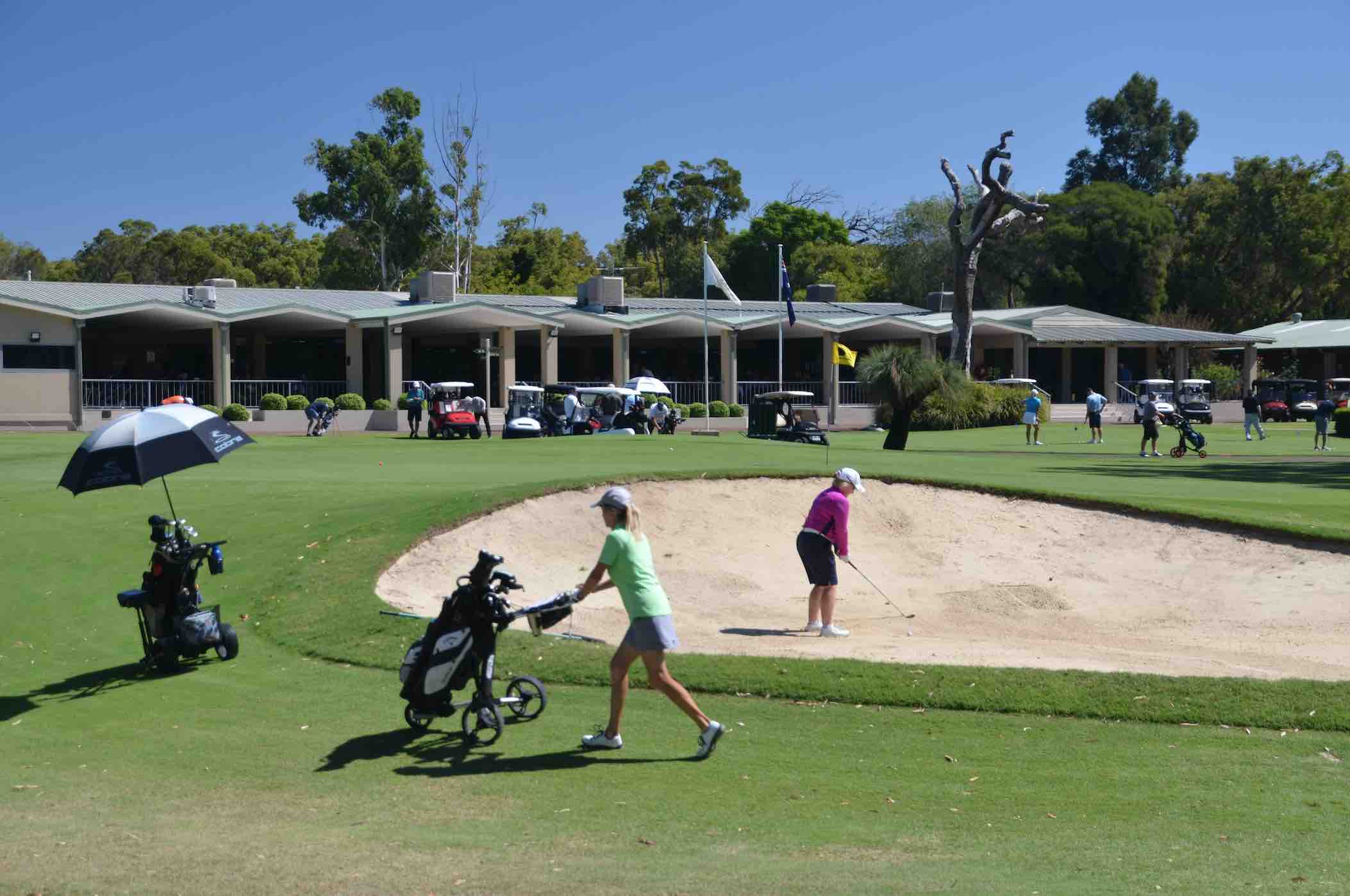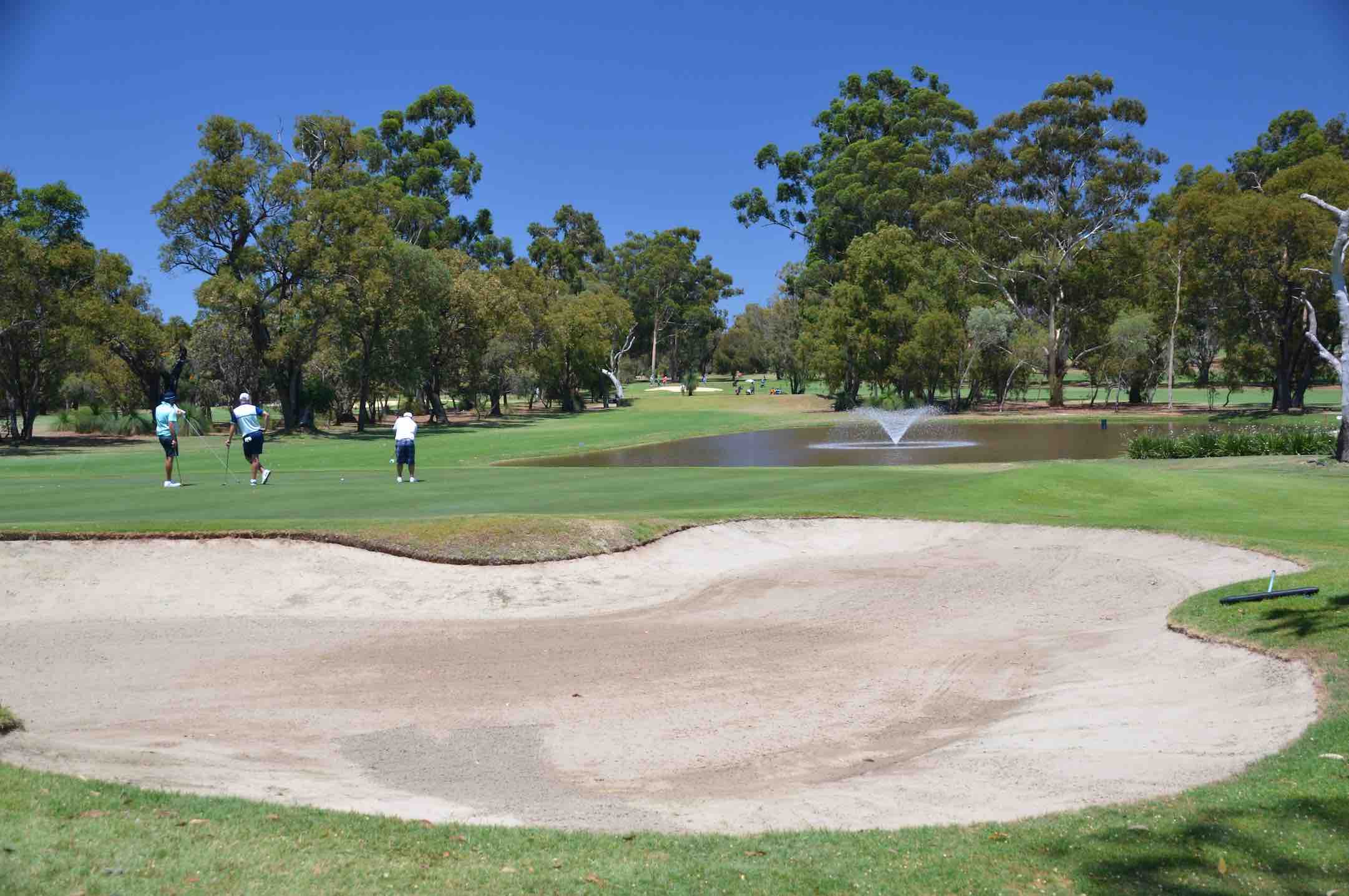“If you build it, they will come.”
The iconic line from 1989 hit movie “Field of Dreams” was first whispered through the corn fields of Iowa as a way for Kevin Costner’s character to lure Shoeless Joe Jackson and the 1919 Chicago White Sox back to the diamond and to reconnect with his father.
The founding members of Wanneroo Golf Club in Perth’s northern suburbs didn’t need a golf course before they pledged their loyalty – and considerable financial outlay – to what would become their own field of dreams.
As Australian Golf Digest closes in on our 50th Anniversary issue in October, so too are the members of Wanneroo preparing to mark their own half-century milestone.
Born initially out of the Bayswater social golf club that played at the then Rosehill golf course, it was at the March 1970 Annual General Meeting of the Bayswater Golf Club that the prospect of establishing a new course all of their own was first discussed.
“These guys really wanted to establish a private club because they thought it was badly needed in the northern corridor, and they were right,” says foundation member Dave Hicks.
Sceptics soon emerged in the local press and despite early inroads, inaugural President Brian McDonald was forced to issue an ultimatum to golfers in the region: If more foundation members could not be found by December 31, 1970 Perth’s next private golf club was nothing more than a pipe dream.
Like any such ambitious endeavours it was the character of the 242 foundation members and 80 associate members that secured the club’s short-term future and provided the basis for what would become a rich and proud history.
Character driven
When Dave Hicks was transferred from Northam to Perth with the Public Works Department in the early months of 1968 he was soon introduced to George Smith.
George in turn would introduce Dave to the game of golf.
Purely by chance the pair bought adjoining blocks of land in Warwick and began discussing the prospect of joining a golf club.
Mt Lawley had a waiting list that seemed none too enticing when George noticed an advertisement in the West Australian notifying of a public meeting at the Mt Hawthorn Town Hall to recruit members for the proposed Wanneroo Golf Club.
The pair joined as Foundation Members on November 29, 1971 but it was not a decision taken lightly.
“We signed up in November 1971 but it was a really tight go,” Hicks tells Australian Golf Digest.
“In those days you paid $80 nomination, $100 membership and had to lend the club $200. So $380 in 1971 when we’d just moved into this house – and really stretched ourselves to get into it – was a heck of a lot of money.
“I almost pulled out but my wife Pam convinced me to go ahead with it.
“It was an absolute punt that it would be a goer but it was the best thing we ever did.
“Even though when we joined as foundation members we didn’t have a course. We used to go to the Rosehill public course once a month and we’d have a social game and hear from the committee about how things were progressing.
“We became mates from day one and it’s carried on over the past 50 years.”

Foundation members regularly gathered on Sundays to participate in working bees as the course designed by founding member of the Australian Golf Architects Association Bob Green and course designer Murray Dawson began to take shape.
Self-admittedly “seven blokes just feeling their way”, the Foundation Committee harnessed the power of the people and watched their precious golf course come to life, the work undertaken instilling a sense of pride and ownership that remains to this day.
“Those foundation members, the men and women, they worked their butts off but they had fun at the same time,” says Hicks.
“That established our foundation and then when people joined they were inducted into that culture.
“To this day the feedback we get from those new members is how amazed they are at the camaraderie that exists within the club. And I’ve got no doubt that stems from those early days even before the course opened.”
That momentous day finally came on March 14, 1973 with slightly sandy fairways, sensational putting surfaces and rough that should have come with a warning sign daring golfers to enter. (Dave Hicks lost his opening tee shot on that day in the left rough on the first hole, hence playing three off the tee. “What a way to start!”)
Lionel Rose – who sadly passed away in mid-July at 92 years of age – donated the opening day trophy and kept a hand-written account of its winners right up until March this year.
Inaugural captain Merv Wells was tasked with indoctrinating a rag-tag bunch of social golfers with the ways of a private golf club, enforcing the rules of behaviour that were to be obeyed both on and off the golf course.
“Merv was a pretty tough taskmaster but in hindsight it was the best thing that could have ever happened because we all learnt pretty fast to do the right things,” Dave Hicks recalls.
“We were a really raw group. There weren’t too many people who joined the club that had a lot of experience with a private golf club.
“The one that stood out for me was people not knowing that you couldn’t stand on a bush and improve your lie in the rough. You’d tread on a little shrub and if he saw you you’d hear, ‘You can’t do that lads! You can’t do that! That’s a two-shot ping!’ We learnt pretty fast.
“He was also the handicapper and he gave me an initial handicap of 16. I sheepishly asked him why it was so low and he said, ‘It’s called bloody potential son. Now get out there and play the game.’ And he was spot on because I never went beyond 16 until age started to catch up with me.”
Inaugural president Brian McDonald is the only surviving member of the Foundation Committee, Life Member Tony Sartori once played 162 holes in a day (that’s nine rounds for the mathematically challenged) to raise money for the clubhouse while the likes of Ian Thompson, Ian Gardner, Bill Treasure, Jack Williams and Arthur Tarbox were characters beloved by the membership.
It was these people – at the urging of his father – who would have a lifelong influence on Kim Felton.
Allowed to join at 11 years of age along with his brother and father, Felton progressed from the juniors into the member ranks on a Saturday where he was issued with a weekly assignment.

“When I could play on a Saturday Dad would tell me who I was playing with and ask me to find out two things about each person by the end of the day,” says Felton.
“That encouraged me as a 13, 14, 15-year-old to play with three strangers and ask questions. That was priceless.
“That’s where I learnt to communicate with the world. The reason that I can stand in a room full of strangers now and have a chat to them and ask questions is through what golf and Wanneroo gave me.”
Shortly after joining Wanneroo Felton linked with the club’s PGA Professional at the time David Milne and used Wanneroo’s considerable length and twisting, tree-lined layout to build a shot-making repertoire that would take him around the world.
“In my opinion it’s the most under-rated course in WA,” Felton says.
“That’s probably being a little bit biased but as someone who has gone and played all around the world it is well and truly under-rated for what it is and what it presents.
“There’s all this talk now about golf courses being swallowed up by the ball but Wanneroo was a bloody tough golf course when I was 11, it was still tough when I was 18 and it’s still tough to play now.
“It was a long golf course for its time and if I hadn’t joined Wanneroo and joined another course not as tree-lined and without holes that went left-to-right, right-to-left, narrow drives, I wouldn’t have learnt to get creative.
“I learnt how to move a golf ball. All my coaching through Dave wasn’t swing and technique it was how to hit shots and what to do under pressure.
“Wanneroo presented that. It really has stood the test of time.”
Wanneroo would also provide Felton with one of his greatest achievements as a professional.
A winner in America and in China, Felton won three Western Australian Opens and three Western Australian PGA Championship titles, his 2003 WA PGA win coming at the course where he has been a member for the past 34 years.
“That one means the most to this day,” says Felton, who began his career playing in Europe courtesy of funds raised by the members at Wanneroo.
“I don’t think I’ve ever had a week on a golf course where I’ve felt so confident. I almost knew I was going to win before I’d even teed it up because I was so comfortable playing the golf course.
“I still look back and wish that golf was as easy as it felt that week.”
While members still lament that the presentation of the golf course that week has never quite been repeated – “It was out of control how good it was that week. Jon Carter and the team presented a masterpiece of a golf course” – Felton has his own regret.
The course record Felton shares with Pat Giles stands to this day yet with three holes to go in his third round of 64 he had his eyes set on a mark on his home track that would never be equalled.
“I was 10-under playing 16 and thinking that I could shoot 59,” says Felton, now the Tour Development Manager for the PGA Tour of Australasia. “Three birdies and I would have shot 59.
“I pushed so hard. I missed a birdie putt at 16 and then bogeyed the last two holes to finish 64.”
It is one in a lifetime of stories shared by members at Wanneroo over the past 50 years and part of a history with many more chapters still to be written.



